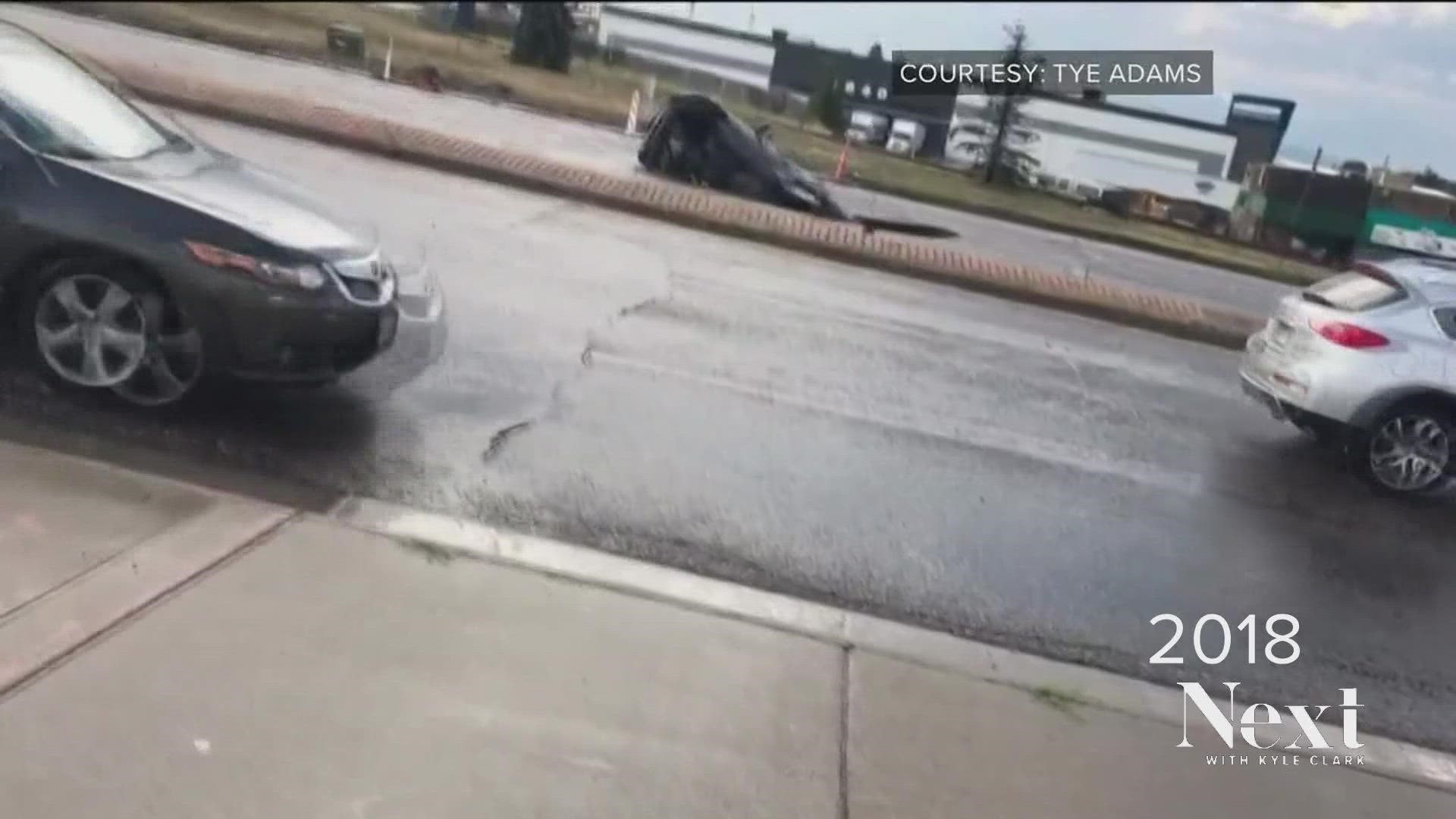SHERIDAN, Colo. — The City of Englewood came close to taking the fall for yet another sinkhole on Oxford Avenue this weekend, but this time it wasn’t a faulty storm sewer line that closed the roads from Saturday night to Monday morning.
This time the sinkhole was further south, and Englewood Public Works Director Maria D'Andrea believes it was caused by an abandoned manhole.
"I was definitely nervous driving in, let me tell you. Because we've done so much to our line that runs through there. It's further south and it runs parallel to Oxford. And I'm like how could this have happened? But it wasn't on our line," D’Andrea said.
The storm sewer line for the city of Englewood that runs along Oxford was at fault for the previous three incidents.
The intersection of Oxford Avenue caved in first in 2015, when it swallowed a police SUV.
In 2018, another sinkhole took out a second SUV. A woman jumped out of the car at the last second.
In 2019 the sinkhole returned, but all cars were safe.
Now, D’Andrea said, they think they have their own line fixed. The new, 20-foot-deep sinkhole is in Sheridan and not associated with Englewood’s utility lines.
D'Andrea said they believe that old manhole may have been filled with dirt during the expansion of Santa Fe in the '90s. To cover up the holes, they were typically backfilled with dirt.
"This was an old manhole most likely that didn't have a cover on it, so the void was basically over a manhole and the dirt washed away over time," she said.
Over the weekend, the sinkhole was patched up.
“It is very safe,” D’Andrea said, “The road is still safe to drive on.”
To prevent future issues, Englewood worked to reinforce its storm sewer line – the past culprit – in that area to make sure it doesn't cave the road in anymore.
D’Andrea said they checked the lines for erosion and deformities – anywhere the sections had eroded, they would “fill the inverts,” or reinforce the areas by filling them with concrete.
The existing line will also be lined for structural integrity.
“The older the street, the closer you get to Denver, the more you find underneath the ground,” D’Andrea said.
Below-ground projects are funded by a combination of state and Federal Emergency Management Agency funding.
Additionally, a storm water utility fee helps pay for improvements. and for a new detention pond in that area meant to stop storm water from overwhelming that system. This includes a new detention pond on the east side of the problematic intersection to detain some of the water that goes through this pipe.
It’s a $23 million project, and D’Andrea said they’re still finalizing the design.

